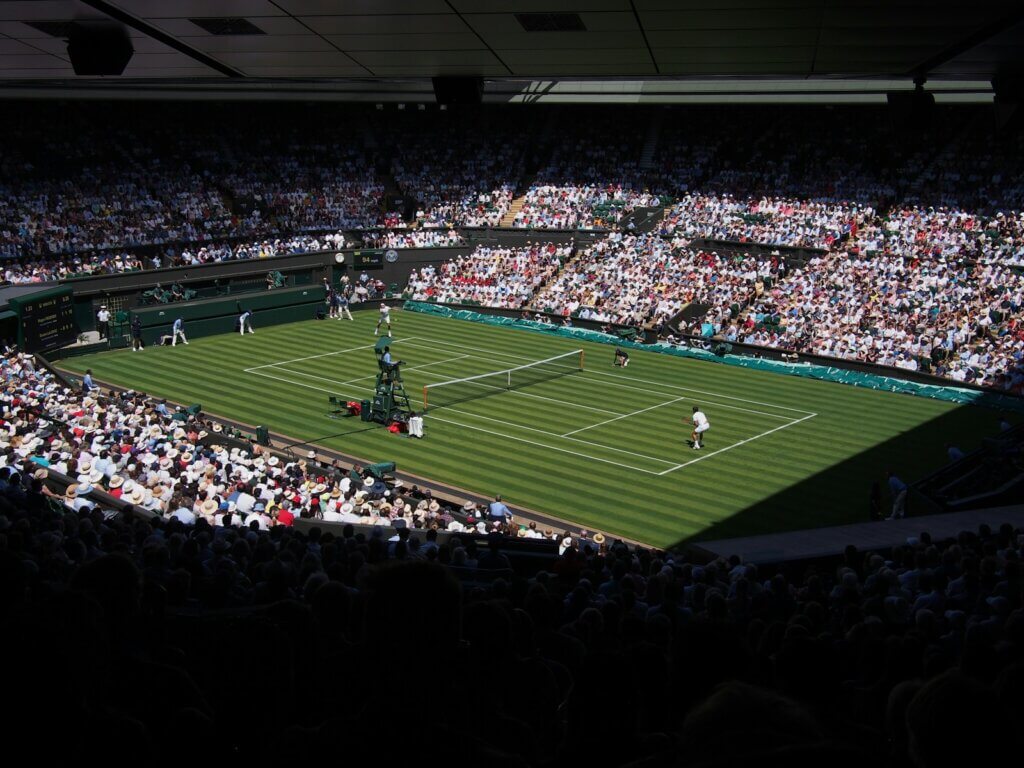In the high-stakes world of professional tennis, certain points hold more importance than others in determining who will be the victor. One such pivotal point is the “deciding point” – a fitting name for a moment that feels like sudden death. When a tennis game reaches a score of 40-40 or “deuce”, the next point becomes a deciding point. Win it, and you seize the advantage. Lose it, and your opponent gains the upper hand. This one point will ultimately determine who wins the game and can alter the momentum of the entire match.
Understanding the Deciding Point
To understand the immense pressure and implications of a deciding point, one must first comprehend the unique scoring system in tennis. Unlike other sports where teams battle to rack up the highest score, a tennis match consists of multiple games, sets and points. To win a game, a player must win four points. When both players each have three points or the score reaches 40-40, it is called “deuce”. This is the scoreline that sets up the deciding point.
At deuce, the next point is crucial. If Player A wins it, they gain the “advantage”. If Player B wins the next point after that, the score goes back to deuce again. And on it goes until one player wins two consecutive points from the deuce score. That player then wins the all-important game. From this back and forth battle, a single point becomes highly decisive in awarding the advantage and edge to the victor. The deciding point arrives without warning, ratcheting up the pressure exponentially.
Strategic Play During Deciding Points
The sudden death nature of deciding points requires immense mental composure and tactical strategy. Elite tennis players approach these pivotal moments with an arsenal of weapons geared towards gaining the winning edge. Aggressive players may choose to up the ante by hitting forceful shots to put their opponent on the backfoot immediately. Defensive strategists play it steady, relying on consistency and precision to outlast their adversary in long rallies.
The weapon of choice also differs. While some players smash blistering aces and untouchable services to grab points in a flash, others patiently construct the point with accurate groundstrokes. Adaptability is key; being able to switch tactics quickly enough to confuse the opponent can make all the difference. No matter what style a player adopts, deciding points demand peak concentration. Any lapses in focus at this crucial juncture and the point is lost.
At this stage, anxiety and nerves also inevitably come into play. Hitting accurate shots under pressure is as much a mental skill as a physical one. Players who can channel their nerves and make sound split-second decisions usually have greater success converting deciding points into won games. Those overwhelmed by the stress are more prone to making unforced errors. Tough losses in deciding points also tend to dent players’ confidence, which ultimately impacts how well they perform in achieving victory.
Impact of Deciding Points on Tennis Matches
While every point counts in a tennis match, deciding points have the most direct bearing on its outcome. They can completely swing the momentum in one player’s favor while crushing the confidence of another. Some famous Grand Slam five-set classics illustrate the pivotal role deciding points play in the sport:
At Wimbledon 2008, the duel between all-time greats Roger Federer and Rafael Nadal came down to a nail-biting fifth set. With Nadal serving at 7-7, the match was balanced on a knife’s edge. When Federer seized the deciding point to break Nadal’s serve, he took control, eventually prevailing to claim the title and his fifth straight Wimbledon championship.
A year later at the 2009 Australian Open, it was Nadal gaining revenge in another five-set thriller against Federer. At 5 games apiece in the decider, Nadal won three straight deciding points to break Federer and serve for the championship. Hitting amazing passing shots while retrieving like a man possessed, Nadal clinched three more deciding points to capture a tense duel.
The ebb and flow of deciding points shapes matches and adds spine-tingling drama. A won point can establish dominance for an entire set. A lost one sometimes signals the downward spiral towards defeat. Regardless of playing style or experience, no player is immune to the intense pressures these big points produce.
Deciding points occupy rarefied territory in tennis as short moments that seem to stretch for eternity. They demand absolute focus and courage under fire. Both physical capabilities and mental resolve are squeezed to their limits, with the outcome having huge implications on the match. These sudden death points will forever be etched in the sport’s memory for their nail-biting, pulse-pounding entertainment value. For the players themselves, they represent career-defining tests of skill and bravado. Conquering the deciding point separates champions from the rest, cementing legends in the process.


